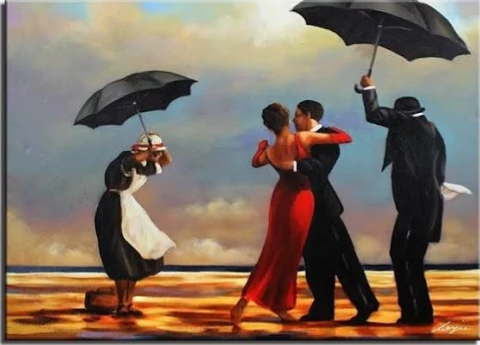I have to admit that my motivation for this article is that I'm rapidly approaching a big round birthday! At the back end of September I finally loose my grip on my early fifties as I hit the big six zero! It's a time of reflection and a chance to gather my remaining wits in order to live the next phase of my life. My spring chicken has sprung and the hill's higher behind me than in front.
So it's worth asking the question: Am I too old to dance?
Physically there's no reason not to. I'll spare you the organ recital, a wonderful phrase that I heard on Radio 4 describing the first ten minutes of every middle aged conversation. In fact, I could do with the exercise as my body is almost as round as the upcoming birthday. Mentally I’m actually one of the sharpest chisels in the toolkit, but that’s only because most of my chisels have been handed down from grandad, to dad, to me and most are so blunt that they're only useful to open tins of paint.
Fliss and I went dancing the other weekend. It was the monthly Sunday social in East Finchley run by Sweetlead Salsa AKA Heidi and Trevor. It was held in a college hall and was very pleasant. The age range was that of those who had learnt salsa in the nineties and kept going. My kind of peeps. Three people said to me they had done their first class with me way back in the day. I limited my use of the ‘no refunds policy’ joke to just the once.
The great thing about dancing in a more mature crowd is that everyone is so chilled. There's no expectation to impress, everyone's polite and positive and everyone gets it. The ‘it’ being that dancing is about having fun. It's not about being the best, or showing off, or flirting (just a tad), or anything else other than having a good time.
I did feel a bit rusty. For me that means my leads are a little early and my repertoire reverts to my old favorites. It takes me longer to attune to my partner and the music, but I know my rust is only temporary.
As a bald, fat, middle-aged man I’ve noticed there's seldom any expectation that I'll be a good dancer. Perhaps I’m just projecting my insecurities onto the crowd, but I feel I fit into the ‘Better than sitting down and it's nice to be asked’ category. The great thing about low expectations is that it’s easy to exceed them; and if you don’t, you’ve delivered exactly what was expected! No pressure!
I'm dance confident. I can connect to the music and move freely. I love entering Chiksentmehi’s ‘flow state’, where it all just works and my brain is flooded with a drip drip drip of happy brain juice. Our bodies, minds, brains and emotions are in sync. It's a place of creativerty and play.
According to research by psychologist Dr Peter Lovatt AKA Dr Dance *, there is evidence that men start to become more dance confident from mid fifties onward. This suggests that either they feel they are better dancers; or maybe they've lowered the bar (or is that barr) and are comfortable with their dancing. Either way, as long as our dancing is good enough, we can leave all the stress of proving ourselves to the young guns.
Interestingly dance confidence peaks for women around their mid fifties before dropping to a lifetime low point around the mid sixties at which point it begins to rise again.
What strikes me about this research is that I'd assumed that dance confidence peaks in teens/twenties but in fact it's remarkably consistent throughout adult life. What is expected is that women always have more dance confidence than men until their sixties.
There's now sooooo much research that dancing is good for our health and that includes our brains as well as our bodies. OK brains are a part of our bodies and not apart. There's a growing body of research evidence suggesting that dance is one of the best activities for our mental health.
So I'm going to keep dancing. Mambalsa, Salsa and perhaps I’ll try many more dances, so see you on the dance floor.
* (Lovatt P. 2018 p76) Here’s a link to Peter Lovatt’s AKA Dr Dance’s book Dance Psychology it’s packed full of interesting studies connecting dance and well-being.






















